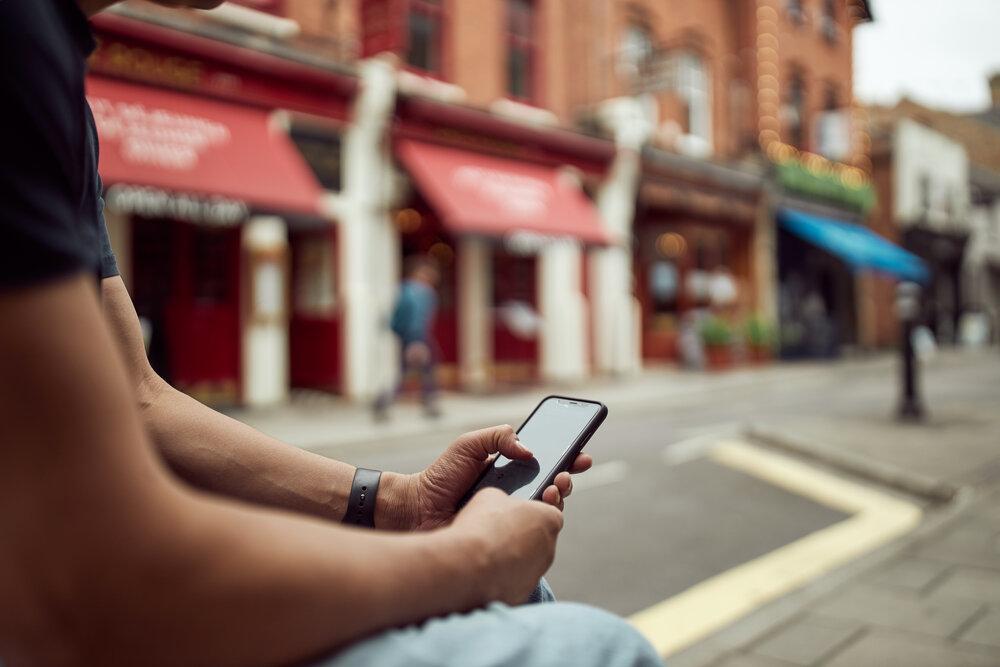Meet Sociability: a unique accessibility app

The mobile app Sociability is aiming to make sporting venues more inclusive and accessible to ensure disabled people can exercise regularly.
Sociability was founded by Oxford University graduate Matt Pierri as a way to source information on the accessibility of local venues – from restaurants to gyms.
Pierri, 30, first grew the roots of Sociability through the formation of the Oxford Accessibility Project during his time at university, which provided information on the accessibility of Oxford colleges.
Pierri’s app has now started to hit new heights, expanding across the UK with the aim of assisting disabled people in socialising and exercising.
Pierri said: “As a wheelchair user myself, I just wanted to find a better way solve this problem.
“A large part of what we're trying to do is break down stereotypes of what disability means, but also what disabled people want to do and can do.
“There's a stereotype that disabled people are not and can’t be fit and healthy. We are often seen as broken and frail, which is not true. The Paralympics is a great example of that, albeit one in a very elite context.
“We want to encourage activity and exercising for the wider disabled population but the reality is, this can often be harder for disabled people because of their impairments. To ensure everything works as planned, disabled people need more information about an exercise space or location.
“One of the great things about working with Parasport is the capacity to help remove some of these obstacles to exercise by giving people greater peace of mind about where that they can go to the gym.
“Disabled people are often told that they can't go to regular sporting facilities, and that's just not true. We're excited to help facilitate a broader sense of what physical activity is possible and where.”
Pierri, who arrived in the UK from Australia in 2016, regularly keeps fit by swimming and playing wheelchair basketball and hopes local sporting venues will take on board his top tips.
“My main tip when thinking about the accessibility of a space is to break things down. Both to consider different types of impairments, but also different areas within a space. The most important thing is to let disabled people decide for themselves, and that's our whole ethos within Sociability,” he added.
“When venues talk about their accessibility, they should do so in reference to specific areas such as entrances and toilets, rather than the space as a whole.
“When talking about the features of a space, try and break them down into what is relevant for different impairments, like mobility or sensory impairments. Accessibility needs are different for different people, based on both their disability and the context in which they’re visiting.
“My other tip would be to start with the simple things first. A lot of the time, people freak out when they think about the range of different disabilities, and they assume accommodations must be incredibly niche and complex and something about which they know nothing, when in actual fact, it is often the most basic things that make the most difference.
“For example, simple descriptions of the space are often the most helpful - is it loud or quiet, or bright and have harsh lighting? Are there stairs or is there a ramp? Is there braille signage for people to use? You don't need special training to identify these basic things, and yet they may often determine whether a disabled person can comfortably use a space or not.
“Lastly, I’d say people should just never assume. If you don’t know, just ask! All disabled people are different, and you can't lump them all into one bucket.
“Just because a person is disabled, doesn't mean they necessarily can't do X or Y. The most important thing is just to ask.
"The reality is that too often non-disabled people, without any insight into the matter, tell disabled people what they can and can't do.
“At Sociability, we’re focused on empowering disabled people to make a decision. It's their body and they know it best, so let them decide for themselves.
“We’re focused on building up the disabled community to feel comfortable going out and about in the world around them."
MATT PIERRI'S TOP ACCESSIBILITY TIPS
These are quick wins for describing the accessibility of a sporting facility.
- Describe your facility’s accessibility in distinct areas, rather than trying to describe the building as a whole. Key areas will include: entrance(s), toilets (including shower + change facilities) and activity spaces (whether inside or outside).
- For each of these, describe what accommodations are available for different categories of impairment rather than trying to judge accessibility for all disabilities at once. Key categories of impairments include: mobility, visual, hearing and sensory.
- Then, for each of these, outline the most basic considerations first. Key accessibility accommodations for each of mobility, visual and hearing include:
- Mobility: step-free access (yes/no), door widths (narrow or wide), assistance with door opening (manual, automatic doors)
- Visual: braille (yes/no), tactile indicators on the floor (yes/no), font size for written signage (small, large), colour contrast for reading or spotting hazards (low contrast, high contrast)
- Hearing: hearing loops (yes/no), ambient noise (quiet, loud), echoey environment (yes, no)
- Finally, venues should highlight any other purpose-built accessibility accommodations or equipment. This is particularly relevant in toilets/changing rooms in relation to sporting facilities and leisure centres.
- And remember, when in doubt, ask a disabled person for their thoughts!
You can download the Sociability app for IOS or Android, or view on the web. For more information visit https://www.sociability.app/
Image: David Fisher Studios